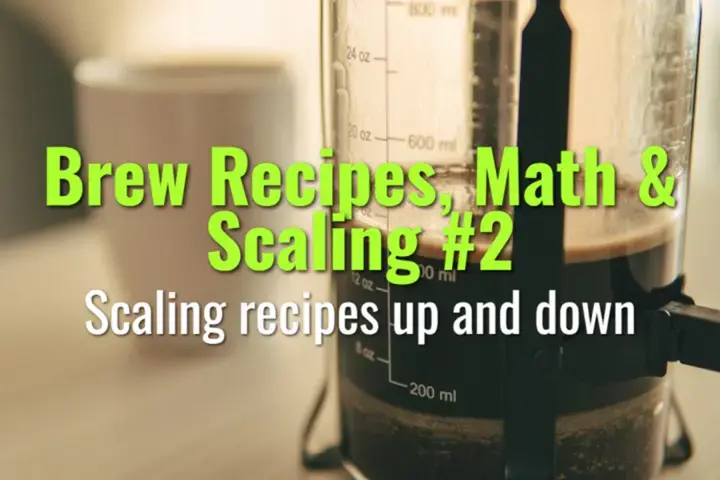Scaling recipes up and down
How to scale coffee recipes for larger or smaller brews while keeping strength and extraction targets consistent.
- Coffee Basics Nerds
- 1 min read
Article 2 of 12 in Brew Recipes, Math & Scaling/

Key Principle
- Brewing recipes scale linearly: keep the brew ratio (coffee : water) constant.
- Example: If 20 g coffee → 300 g water (1:15), then 40 g coffee → 600 g water, still 1:15.
Scaling Up
- Larger brews (batch brewers, cupping bowls, big pour-overs):
- Maintain brew ratio and grind setting.
- Watch for longer drain times in filter brews due to bed depth.
- Agitation may need adjustment to avoid channeling.
- Larger batches cool slower, affecting extraction dynamics.
Scaling Down
- Smaller brews (single-cup V60, AeroPress):
- Maintain ratio, but contact time decreases.
- May require slightly finer grind to compensate.
- Small errors in dose measurement have bigger impact—precision is key.
Practical Example
- Original: 18 g coffee, 270 g water (1:15).
- Scale up: 54 g coffee, 810 g water (still 1:15).
- Scale down: 12 g coffee, 180 g water (still 1:15).
Challenges & Adjustments
- Filter Brewing: Larger beds extract differently; adjust grind if drawdown slows.
- Immersion Brewing: Scaling is straightforward; just multiply ingredients.
- Espresso: Less scalable due to puck resistance and machine limits—adjustments often non-linear.
Summary
Scaling recipes is about keeping the brew ratio constant, then fine-tuning grind and technique to account for size-specific variables. With care, both large batch brews and single cups can match the flavor balance of the original recipe.